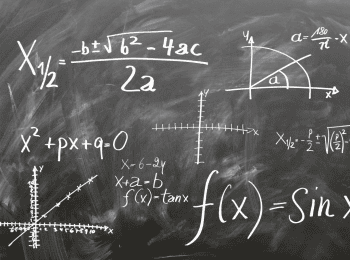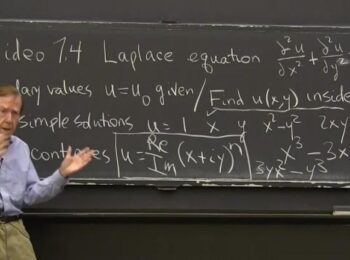Rectangle Calc: Find P
So, you’re stuck on a math problem and can’t figure out how to solve for P. You know P has to equal something, and you think you remember how the equation for this problem goes, but you’re unsure.
Don’t get frustrated. You’ve found the answer!
Whether you’re taking this level of math for the first time, working on a project that requires a little computing, or just trying to help someone out with their homework, this article is here to walk you through any rectangle calc: find P problem in existence.
With a quick refresher and a few easy steps, you’ll be tearing through your problem in no time flat. Here’s everything you need to know about solving for P.
What Does the Letter P Stand For?

Photo by Startup Stock Photos from Pexels
Before attempting to tackle any equation, it helps to know what you’re looking at. In this case, you’re dealing with a rectangle. Simple enough, right? You’ve known this shape since you were a young child. What you need to know are the dimensions to this rectangle.
Your math problem also has letters on the inside or outside of the rectangle. These are most often X and Y. The letter X is located on a more extended section of the rectangle, while Y is found on a shorter part. These represent the length and width of the shape’s sides.
Keep in mind that their positions could be reversed, or they could be different letters entirely. It doesn’t matter which letters they are, all you need to know is that they represent the two different lengths of lines used to form the rectangle.
Across the shape from X is a line of the same length, which is true for Y as well. The longer lines are always going to be the length of the rectangle while the shorter two represent the width. If it helps you visually, you might want to write in L an W for these measurements.
Chances are, the letter P isn’t anywhere to be found on your rectangle. Instead, it’s in the equation for this math problem. P stands for perimeter, which is the sum of all the lines that create a shape. For any rectangle, that means it the sum of both width and length lines combined.
The way an equation looks in a “rectangle calc: find P” problem has three variations. It can look like either:
Formula Derivation
P = x + x + y + y
P = 2x + 2y
or
P = 2(x + y)
All three of these equations produce the same answer to any problem, so use the one you are most comfortable with. Most math courses with use the third variation, P = 2(x +y). Getting familiar with this form of the equation will save you a lot of time as you progress to advanced problems and higher levels of mathematics.
Why Solve for the Perimeter?

Photo by Startup Stock Photos from Pexels
Aside from simply passing a course, you might wonder why anyone would need to solve for P in the first place. Is there a practical, real-life situation where this problem occurs? If so, when and how? Your textbook might give you a single example, but that isn’t the whole picture.
You might be surprised to learn that this equation is used relatively often, most notably in construction as well as some home uses. Imagine that you want to put a fence around your yard to keep your dog inside, for instance.
Fencing isn’t purchased in feet; it’s bought by area. You need to know the area of your yard to buy the right amount, which requires you to know the perimeter first. If you have someone put the fence in for you, they would have to do the same thing.
Architects drawing up designs for a house and construction workers must solve for P when creating a foundation. County codes and laws dictate how far away one home must be from another, which means a perimeter needs to be found to stay compliant when building.
If a farmer builds a barn to house their horses, knowing the perimeter of the barn itself and each stall allows them to maximize space while minimizing the cost of construction materials. The same is true for any construction project.
Companies that install swimming pools also have to solve for P. Their goal is to maximize the area around the pool within a person’s yard. A perimeter is used for the yard, the pool itself, and the surrounding area.
A less complex task that you do every year is gift wrapping. While you might not think about it, deciding on the amount of wrapping paper needed for a box uses the same formula. You can always eye it up, but solving for P would allow you to create a neatly wrapped gift with the least amount wrapping paper.
These are just a few examples of where perimeter equations are used in real life. The list goes on and on, making this a valuable piece of information for a wide variety of careers and home projects.
How to Solve for P

Image by pexels
When you receive a “rectangle calc: find P” problem, the first thing to do is identify your length and width. You only need to measure one long side and one short side of the rectangle since they are equal in length to their parallel sides. In most math problems, these numbers are given to you.
Let’s say the length of a rectangle was 7, and the width was 4. That would mean that X or L = 7 and Y or W = 4. You can rewrite any of the equations from earlier in this article to reflect these new values.
P = 7 + 7 + 4 + 4
P = 2(7) + 2(4)
or
P = 2(7 + 4)
Solving any of those variations of the perimeter equation would leave you with 22 as the answer.
P = 7 + 7 + 4 + 4
P = 2(7) + 2(4)
P = 2(7 + 4)
P = 14 + 8
P = 22
However, your work isn’t finished just yet. While 22 is the correct number, the full answer must also include the unit of measurement. Above the top-left of the rectangle in your math problem, there is the measurement for the shape. It could be inches, feet, yards or anything else. If it were inches, then your complete answer would be P = 22 inches.
When dealing with perimeter equations in real life, you’ll have to measure yourself and use what makes sense. However, all of the problems you face in a math course will give you the unit of measurement. If they do not provide one, for some reason, then you do not need to include one.
You can practice this equation as many time as you like until you feel comfortable with it. Give this problem a try: If X = 14 ft and Y = 9 ft, what is the perimeter of the rectangle? What if X = 1,500 yds and Y = 800 yds?
Upping the Ante

Image by pexels
Of course, you might not always run into such simple numbers. In both real life and math, you might find that you are dealing with a fraction. That could be displayed as 7.5 or 7 ¾. What do you do then?
While these might look intimidating at first, they’re not much harder than dealing with whole numbers. Stick with your initial equation, and you can plug in any number thrown your way. Let’s change the initial problem from X = 7 to X = 7 3/16 and Y = 4 to Y = 4 4/8. Our rectangle is measured in feet this time.
numbers together. Now you can continue with the equation, like so:
P = 2(7 + 4 )
P = 2(11)
P = 2()
P = 2()
P =
P =
P =
P = 23
Conclusion
Once you know the equation to find P, you’re over halfway to solving any math problem that requires it. Continue to practice the equation with different numbers and more complicated equations. The more you practice, the easier solving a perimeter problem becomes.
Remember, P stands for the perimeter. It is the combination of the total length and width of any shape. Solving for P is as simple as adding the length and width together, then multiplying by two. That’s all there is to it!
The video may take a few seconds to load.Having trouble Viewing Video content? Some browsers do not support this version – Try a different browser.






